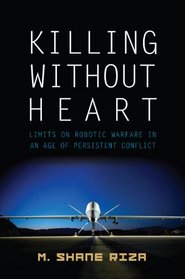Search -
Killing Without Heart: Limits on Robotic Warfare in an Age of Persistent Conflict
Killing Without Heart Limits on Robotic Warfare in an Age of Persistent Conflict
Author:
Today?s wars have no definitive end in sight, are conducted among civilian populations, and are fought not only by soldiers but also by unmanned aerial vehicles. According to M. Shane Riza, this persistent conflict among the people and the trend toward robotic warfare has outpaced deliberate thought and debate about the deep moral issues affecti... more »
Author:
Today?s wars have no definitive end in sight, are conducted among civilian populations, and are fought not only by soldiers but also by unmanned aerial vehicles. According to M. Shane Riza, this persistent conflict among the people and the trend toward robotic warfare has outpaced deliberate thought and debate about the deep moral issues affecti... more »
ISBN-13: 9781612346137
ISBN-10: 1612346138
Pages: 256
Rating: ?
ISBN-10: 1612346138
Pages: 256
Rating: ?
0 stars, based on 0 rating
Genres:
- History >> Military >> Weapons & Warfare >> Conventional
- Engineering & Transportation >> Engineering >> Computer Modelling
- Nonfiction >> Philosophy >> Ethics & Morality




